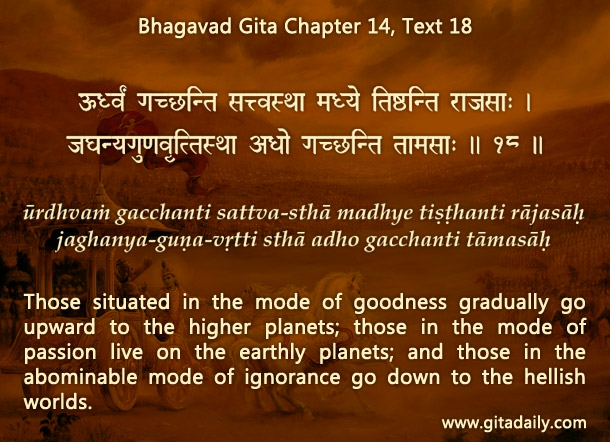The Bhagavad-gita (02.24) states that the soul is immoveable. And yet the same Gita states later (14.18) that the soul moves all over the universe as per the modes influencing it.
How are these two statements to be reconciled? By understanding their context.
The Gita section (02.11-30) where the describer of immovability appears focuses on highlighting how the soul differs from the body. Thus, for example, the things that destroy or damage the body can’t destroy or damage the soul – that is the point of describers such as unbreakability and insolubility used in the same verse (02.24). So, the soul’s immovability implies that the material forces that can move the body can’t move the soul.
The soul’s mobility (14.18) is asserted in the Gita chapter about the three modes of material nature. These modes infect the mind, infatuating it with various worldly objects as sources of happiness. And this infatuated mind drives the soul to seek pleasure from one object to another, from one body to another, from one planet to another. The same soul that can’t be moved by any material force can be moved by its own will. And it abdicates this will to the mind on buying into the latter’s notions of pleasure. Thus, the immoveable soul is misled by the mind all over the universe.
The Gita (08.10) indicates that yoga practice infused with devotion makes the mind acala and leads to liberation. This implies that those who can make the mind fixed, as is the soul, attain liberation.
Bhakti-yoga helps the mind focus on the supremely steady spiritual reality, Krishna. And as Krishna is unlimited, the soul can wander freely and joyfully within the vast nectar-ocean of Krishna’s glories, thereby relishing the ultimate liberation that is not static but is ecstatic.
To know more about this verse, please click on the image
Explanation of article:
Podcast:


Very nice
It is very difficult to contain our mind